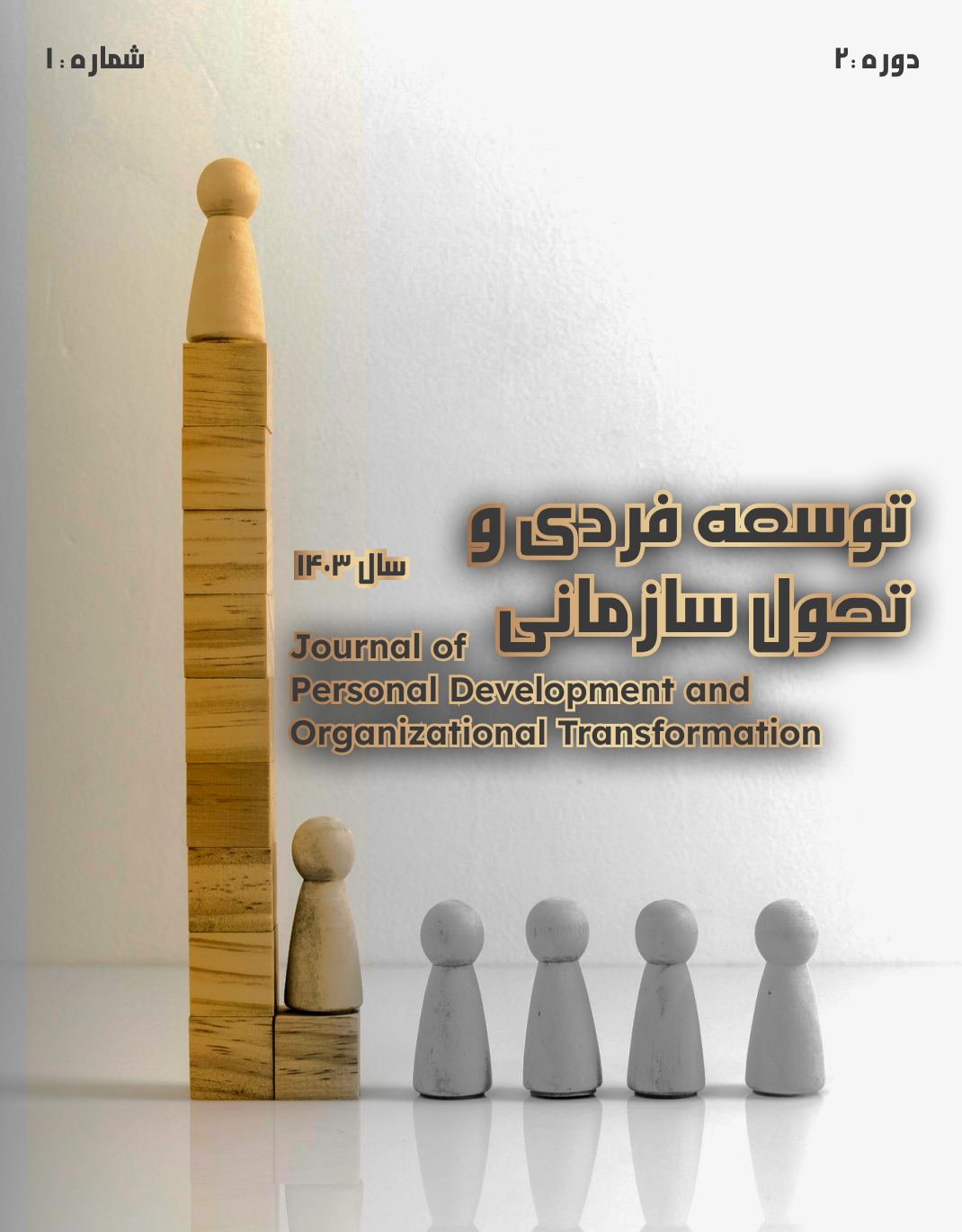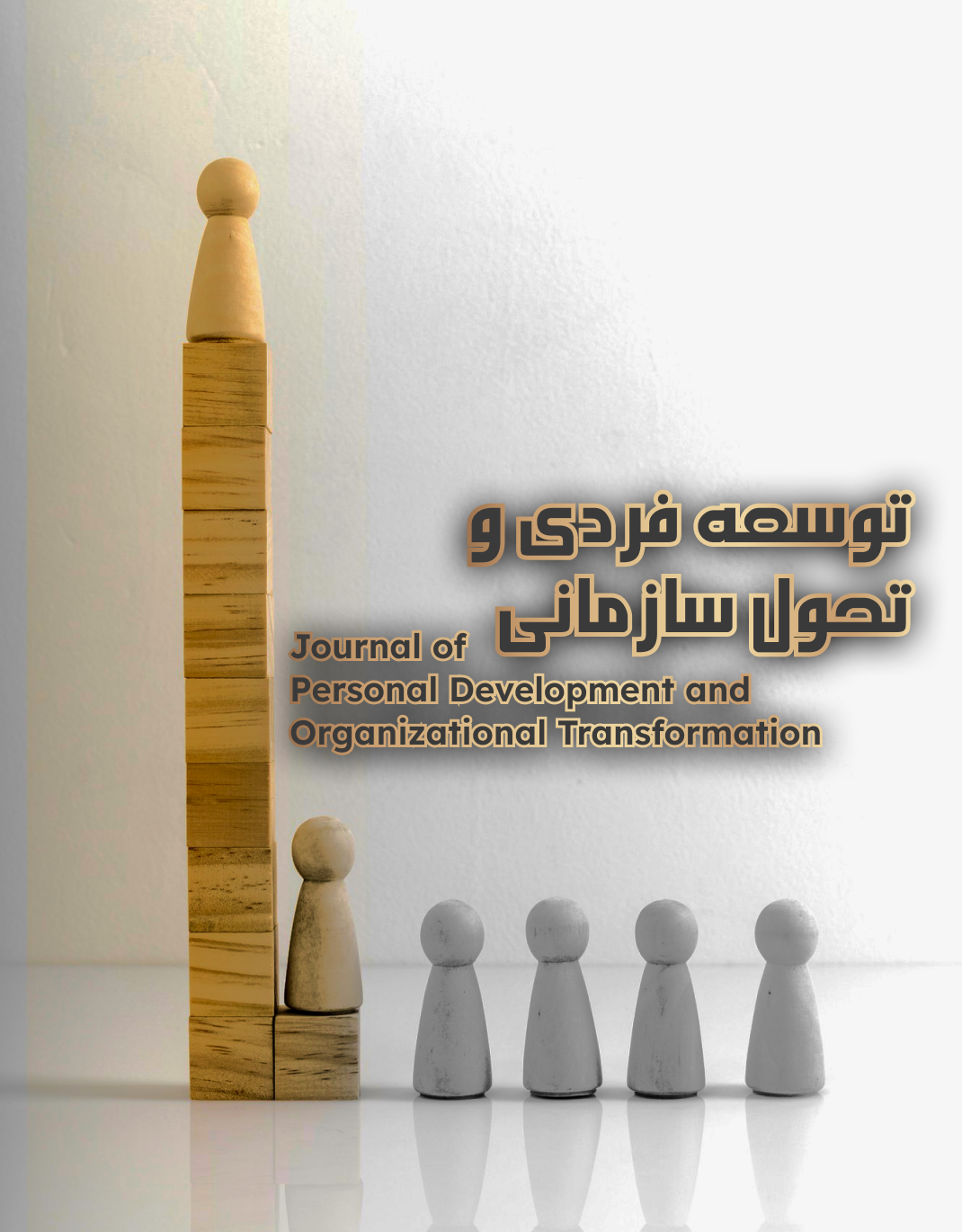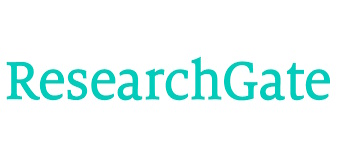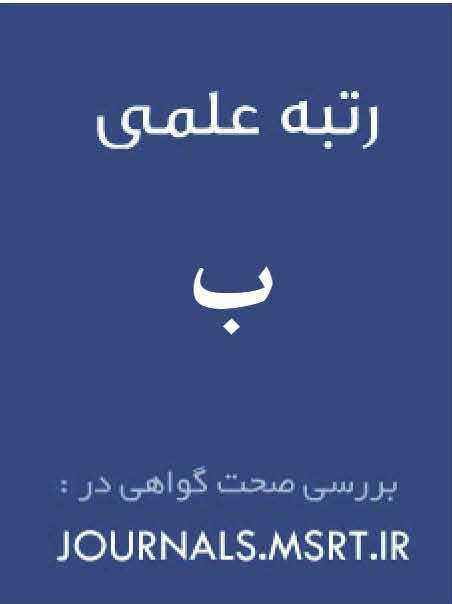Application of the Sandelowski and Barroso Technique in Identifying the Components of a Comprehensive Integrated Enterprise Risk Management Model in New Business Development
Keywords:
Business risk, enterprise risk management, new business developmentAbstract
Risk management in new business development is considered one of the most fundamental and critical aspects of organizational success. With the rapid expansion of technologies, emerging changes in markets, and the necessity for adaptation to dynamic business environments, identifying, assessing, and optimally managing risks are key factors in ensuring organizational sustainability and growth. The objective of this study is to apply the meta-synthesis technique to identify the components of a comprehensive integrated enterprise risk management (ERM) model in the context of new business development. The researcher employed a systematic review and meta-synthesis approach to analyze the results and findings of prior research, and through the implementation of the seven-step method proposed by Sandelowski and Barroso, the effective factors were identified. Out of 541 articles, 40 were selected using the CASP (Critical Appraisal Skills Programme) method. The validity of the analysis was confirmed with a Kappa coefficient of 0.747. To assess reliability and ensure quality control, the transcription method was utilized, which revealed an excellent level of agreement for the identified indicators. The analysis of the collected data using MAXQDA software led to the identification of 58 initial concepts based on 18 indicators grouped into 5 categories. Based on the meta-synthesis technique, five dimensions were categorized according to the identified concepts. These five dimensions are: strategic dimension, operational dimension, financial dimension, human resources dimension, and cultural dimension. Integrated enterprise risk management serves as a comprehensive framework for identifying, assessing, and mitigating risks in the development of new businesses and plays a pivotal role in organizational sustainability and success. The key components of this model include identifying various types of risks (such as financial, operational, strategic, and technological risks), evaluating their impact, designing and implementing risk control and mitigation strategies, and assessing the effectiveness of these control measures.
Downloads
References
Alvarez-Alvarado, M. S., & Jayaweera, D. (2020). Operational risk assessment with smart maintenance of power generators. International Journal of Electrical Power and Energy Systems, 117, 105671. https://doi.org/10.1016/j.ijepes.2019.105671
Anam, M., Setiawan, R., Chinnappan, S. K., Nik Hashim, N. A. A., Mehbodniya, A., Bhargava, C., Sharma, P. K., Phasinam, K., Subramaniyaswamy, V., & Sengan, S. (2022). Analyzing the impact of lockdown in controlling COVID-19 spread and future prediction. International Journal of Uncertainty, Fuzziness and Knowledge-Based Systems, 30, 83-109. https://doi.org/10.1142/S0218488522400050
Baran, B., & Woznyj, H. (2021). Managing VUCA. Organizational Dynamics, 50(2), 100787. https://doi.org/10.1016/j.orgdyn.2020.100787
Berger, L., & Eeckhoudt, L. (2021). Risk, Ambiguity, and the Value of Diversification. Management Science, 67(3), 1639-1647. https://doi.org/10.1287/mnsc.2020.3823
Braumann, E. C., Grabner, I., & Posch, A. (2020). Tone from the top in risk management: a complementarity perspective on how control systems influence risk awareness. Accounting, Organizations and Society, 84, 101128. https://doi.org/10.1016/j.aos.2020.101128
Chaudhry, S., Ahmed, R., & Huynh, T. (2023). Tail risk and systemic risk of finance and technology (FinTech) firms. Technological Forecasting and Social Change, 174, 121-191. https://doi.org/10.1016/j.techfore.2021.121191
Daneshi, Y., & Ismailzadeh, A. (2022). The effect of enterprise risk management system quality and audit committee characteristics on corporate reputation. Financial Accounting and Auditing Research, 14, 207-232. https://journals.iau.ir/article_693675.html?lang=en
DasGupta, R., & Deb, S. (2022). Role of corporate governance in moderating the risk-return paradox: Cross country evidence. Journal of Contemporary Accounting and Economics, 4, 1-18. https://doi.org/10.1016/j.jcae.2022.100313
Deopgen, M., Clauss, T., Kraus, S., & Cheng, C. F. (2020). Knowledge management capabilities and organizational risk-taking for business model innovation in SMEs. Journal of Business Research, 4, 1-10. https://www.sciencedirect.com/science/article/abs/pii/S0148296319307659
Dhillon, R., Ngyen, C., Kleppesto, S., & Hellestrom, M. (2021). Strategies to Respond to a VUCA World. In (pp. 1-84): Department of Business Administration.
Dicuonzo, G., Donofrio, F., Onorato, G., & Turco, M. (2022). Enterprise risk management: What opportunities for the banking sector? In The Changing Financial Landscape (pp. 171-185). https://doi.org/10.1007/978-3-030-82778-6_10
Greuning, H. V., & Brajovic-Bratanovic, S. (2022). Analyzing banking risk: a framework for assessing corporate governance and risk management. 3(2), 1-12. https://documents.worldbank.org/en/publication/documents-reports/documentdetail/403931618461962435/analyzing-banking-risk-a-framework-for-assessing-corporate-governance-and-risk-management-fourth-edition
Hamidzadeh, H., Pourkhalilinodehi, S., & Azimi, P. (2022). Typology of strategic positioning in high-tech organizations with focus on VRIO's impact in VUCA environment. In.
Horvey, S. S., & Odei-Mensah, J. (2025). Enterprise risk management, corporate governance and insurers risk-taking behaviour in South Africa: evidence from a linear and threshold analysis. Journal of Accounting in Emerging Economies, 15(1), 53-83. https://doi.org/10.1108/JAEE-08-2023-0242
Jiang, H., Jia, J., & Chapple, L. (2023). Enterprise risk management and investment efficiency: Australian evidence from risk management committees. Australian Journal of Management, 4, 1-37. https://journals.sagepub.com/doi/abs/10.1177/03128962221144513#tab-contributors
Kautish, P., Hammed, S., & Kour, P. (2022). Career beliefs, self-efficacy and VUCA skills: A study among generation Z female students of tourism and hospitality. Journal of Hospitality, Leisure, Sport & Tourism Education, 30, 1-14. https://doi.org/10.1016/j.jhlste.2021.100340
Mara, G. C., Kumar, Y., K, V. P., Madan, S., & Chandana, R. A. M. (2025). Advance AI and Machine Learning Approaches for Financial Market Prediction and Risk Management: A Comprehensive Review. Journal of Computer Science and Technology Studies, 7(4), 727-749. https://doi.org/10.32996/jcsts.2025.7.4.86
Mihaeala, M., Dobera, R., & Staiculecus, C. (2021). The Impact of the Epidemic Generated by the SARS-COV-2 Virus in the Context of the VUCA World. Management and Economics Review, 5(2). https://doi.org/10.24818/mer/2020.12-05
Munyao, D. K., Deya, J., & Odollo, L. (2025). Strategic Risk Management and Performance of Commercial State Corporations in Kenya. International Journal of Social Science and Humanities Research (Ijsshr) Issn 2959-7056 (O) 2959-7048 (P), 3(1), 97-111. https://doi.org/10.61108/ijsshr.v3i1.157
Nowacka, A., & Rzemieniak, M. (2022). The Impact of the VUCA Environment on the Digital Competences of Managers in the Power Industry. Energies, 15(1), 185. https://doi.org/10.3390/en15010185
Potdar, A., & Mahadik, S. D. (2025). A Multi-Agent Approach to Stock Market Prediction and Risk Management. The Voice of Creative Research, 7(2), 203-211. https://doi.org/10.53032/tvcr/2025.v7n2.27
Sandoval, V., Voss, M., Flörchinger, V., Lorenz, S., & Jafari, P. (2023). Integrated Disaster Risk Management (IDRM): Elements to Advance Its Study and Assessment. International Journal of Disaster Risk Science, 14, 343-356. https://doi.org/10.1007/s13753-023-00490-1
Sinha, D., & Sinha, S. (2020). Managing in a VUCA World: Possibilities and Pitfalls. Journal of Technology Management for Growing Economies, 11, 1-19. https://doi.org/10.15415/jtmge.2020.111003
Syrova, L., & Spicka, J. (2023). Exploring the indirect links between enterprise risk management and the financial performance of SMEs. Risk management, 9, 25-52. https://doi.org/10.1057/s41283-022-00107-9
Troise, C., Corvello, V., Ghobadian, A., & O'Regan, N. (2022). How can SMEs successfully navigate VUCA environment: The role of agility in the digital transformation era. Technological Forecasting and Social Change, 174, 121227. https://doi.org/10.1016/j.techfore.2021.121227
Wong, L. W., Tan, G. W. H., Ooi, K. B., Lin, B., & Dwivedi, Y. K. (2024). Artificial intelligence-driven risk management for enhancing supply chain agility: A deep-learning-based dual-stage PLS-SEM-ANN analysis. International Journal of Production Research, 62(15), 5535-5555. https://doi.org/10.1080/00207543.2022.2063089
Yazdi, M., Zarei, E., Adumene, S., & Beheshti, A. (2024). Navigating the Power of Artificial Intelligence in Risk Management: A Comparative Analysis. Safety, 10(2), 42. https://doi.org/10.3390/safety10020042
Zainuddin, S. A., Abdullah, B., Nasir, N. A. M., Abdullah, T., Nawi, N. C., Patwary, A. K., & Hashim, N. A. A. N. (2023). Sustainable risk management practice in the organization: a Malaysian case study. Environmental Science and Pollution Research, 30, 24708-24717. https://doi.org/10.1007/s11356-022-23897-7
Downloads
Published
Submitted
Revised
Accepted
Issue
Section
License
Copyright (c) 2024 سمانه موسائی (نویسنده); محمدعلی کرامتی; آزاده مهرانی , حسین معین زاد , صفیه مهری نژاد (نویسنده)

This work is licensed under a Creative Commons Attribution-NonCommercial 4.0 International License.







